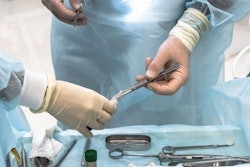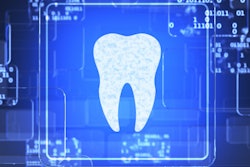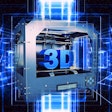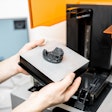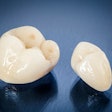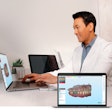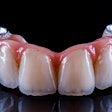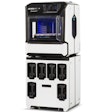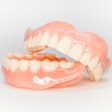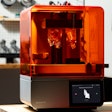
A device inspired by the unique teeth of a python may enhance rotator cuff surgery outcomes by improving repair strength and reducing the risk of a retear. The study recently was published in Science Advances.
Inspired by the inward-hooked teeth of Pythonoidea snakes that grasp without tearing, this biomimetic device nearly doubles the mechanical strength of current shoulder repairs while remaining compatible with standard surgical techniques, the authors wrote (Sci Adv, June 28, 2024, Vol. 10:26).
"We decided to see if we could develop a device that mimics the shape of python teeth, that would effectively grasp soft tissues without tearing, and help reduce the risk of tendon re-tearing after rotator cuff repair," Iden Kurtaliaj, the study's lead author, said in a press release dated June 27.
Rotator cuff repair surgeries often fail, with 20% to 94% of the 600,000 annual procedures in the U.S. resulting in retears. The primary cause of failure is due to the sutures tearing through tendons at grasping points, the authors wrote.
The team initially aimed to mimic python teeth but broadened their approach with simulations, 3D printing, and cadaver experiments to explore how tooth shape influences grasping versus cutting. They developed various tooth designs optimized into a biomimetic device made from biocompatible resin.
The device features an array of small teeth atop a curved base tailored through 3D printing to match the patient's specific humeral head curvature at the supraspinatus tendon attachment site, enhancing grasping strength without risking tendon puncture.
To evaluate its effectiveness compared to standard rotator cuff repair methods, paired cadaveric shoulders (five in total) underwent double-row suture anchor repairs. Each shoulder had a tear created at the supraspinatus tendon.
One of each pair received standard double-row suture repair, while the other received the same method combined with the device, chosen randomly. Repairs were tested under uniaxial tensile testing until failure.
Positioned between the two suture anchors in the medial row, the device reinforced vulnerable tendon-suture interfaces prone to mechanical failures. The curved teeth notably increased mechanical strength by distributing loads more evenly across the attachment area.
The results demonstrated that repairs with the device experienced an average 83% increase in maximum force compared to those without, accompanied by significantly enhanced energy absorption. Postfailure inspections consistently confirmed secure device attachment to the bone without tooth breakage, the authors wrote.
However, the study had limitations. Future device iterations should consider a porous base instead of a solid one to potentially improve tendon-to-bone healing by facilitating better integration and serving as a localized drug delivery reservoir.
"Overall, our research not only introduces a device that significantly improves mechanical strength, but also, in future design iterations, aims to facilitate the delivery of biologics using bioabsorbable materials with a porous structure to improve tendon-to-bone healing," Kurtaliaj et al concluded.






